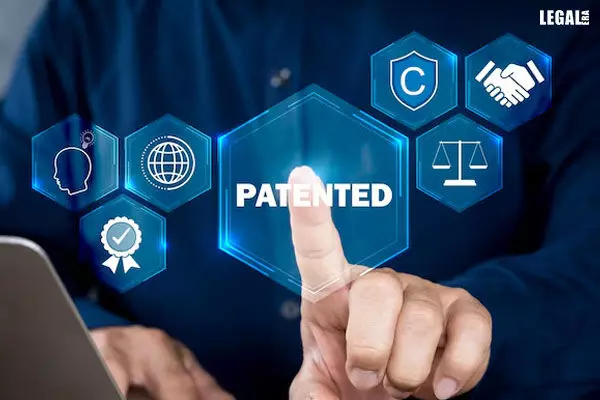- Home
- News
- Articles+
- Aerospace
- Artificial Intelligence
- Agriculture
- Alternate Dispute Resolution
- Arbitration & Mediation
- Banking and Finance
- Bankruptcy
- Book Review
- Bribery & Corruption
- Commercial Litigation
- Competition Law
- Conference Reports
- Consumer Products
- Contract
- Corporate Governance
- Corporate Law
- Covid-19
- Cryptocurrency
- Cybersecurity
- Data Protection
- Defence
- Digital Economy
- E-commerce
- Employment Law
- Energy and Natural Resources
- Entertainment and Sports Law
- Environmental Law
- Environmental, Social, and Governance
- Foreign Direct Investment
- Food and Beverage
- Gaming
- Health Care
- IBC Diaries
- In Focus
- Inclusion & Diversity
- Insurance Law
- Intellectual Property
- International Law
- IP & Tech Era
- Know the Law
- Labour Laws
- Law & Policy and Regulation
- Litigation
- Litigation Funding
- Manufacturing
- Mergers & Acquisitions
- NFTs
- Privacy
- Private Equity
- Project Finance
- Real Estate
- Risk and Compliance
- Student Corner
- Take On Board
- Tax
- Technology Media and Telecom
- Tributes
- Viewpoint
- Zoom In
- Law Firms
- In-House
- Rankings
- E-Magazine
- Legal Era TV
- Events
- Middle East
- Africa
- News
- Articles
- Aerospace
- Artificial Intelligence
- Agriculture
- Alternate Dispute Resolution
- Arbitration & Mediation
- Banking and Finance
- Bankruptcy
- Book Review
- Bribery & Corruption
- Commercial Litigation
- Competition Law
- Conference Reports
- Consumer Products
- Contract
- Corporate Governance
- Corporate Law
- Covid-19
- Cryptocurrency
- Cybersecurity
- Data Protection
- Defence
- Digital Economy
- E-commerce
- Employment Law
- Energy and Natural Resources
- Entertainment and Sports Law
- Environmental Law
- Environmental, Social, and Governance
- Foreign Direct Investment
- Food and Beverage
- Gaming
- Health Care
- IBC Diaries
- In Focus
- Inclusion & Diversity
- Insurance Law
- Intellectual Property
- International Law
- IP & Tech Era
- Know the Law
- Labour Laws
- Law & Policy and Regulation
- Litigation
- Litigation Funding
- Manufacturing
- Mergers & Acquisitions
- NFTs
- Privacy
- Private Equity
- Project Finance
- Real Estate
- Risk and Compliance
- Student Corner
- Take On Board
- Tax
- Technology Media and Telecom
- Tributes
- Viewpoint
- Zoom In
- Law Firms
- In-House
- Rankings
- E-Magazine
- Legal Era TV
- Events
- Middle East
- Africa
No Injunction Granted By Delhi High Court In Patent Dispute; Highlights Limits Of Doctrine Of Equivalents

No Injunction Granted By Delhi High Court In Patent Dispute; Highlights Limits Of Doctrine Of Equivalents
Introduction
The Delhi High Court presided by Justice Amit Bansal delivers a significant judgment in Crystal Crop Protection Ltd. v. Safex Chemicals India Ltd. & Ors on May 7, 2025 elucidating the boundaries of the Doctrine of Equivalents in Indian patent law.
Factual Background
The plaintiff is a company that manufactures and sells a variety of products, including pesticides, insecticides, weedicides, herbicides, plant-growth regulators, and micronutrient fertilizers. In January 2024, the plaintiff came across a product supplied under the name 'RACER' that was made and marketed by Safex Chemicals India Ltd. After inspecting the product and its packaging, it was discovered that the composition of the said product was similar to the composition described and claimed in the suit patent. The defendants have been lawfully manufacturing and marketing weedicidal compositions under the brand names 'RACER' and 'JODI No.1' containing 'Clodinafop Propargyl 9%' and 'Metribuzin 20% WP' since June 2020.
Procedural Background
The present suit has been filed seeking relief of permanent injunction restraining the defendants from infringing the plaintiff's registered patent no. 417213, titled as “Weedicidal Formulation and Method of Manufacture” along with ancillary reliefs. In order to prove that the dyeing agent was not necessary for the innovation, the plaintiff invoked the Doctrine of Equivalents. The coloring agent was functionally significant and had been defended during patent litigation, the defendants retorted.
Issues Involved
1. Doctrine of Equivalents: Whether the omission of the dyeing agent from the allegedly infringing products constitutes patent infringement under the Doctrine of Equivalents.
2. Essentiality of Claimed Element: Whether the dyeing agent is essential to the patented invention.
Contentions of the Parties
Plaintiff's Contentions: Crystal Crop argued that the dyeing agent served an auxiliary purpose and that the Doctrine of Equivalents should apply since the "pith and marrow" of the invention were copied.
Defendant's Contentions: The defendant countered that the dyeing agent was functionally important, improving visibility and preventing overuse or underuse of the chemical.
Reasoning and Analysis
The Delhi High Court held that where a patent claim explicitly includes a feature tied to a technical effect, its omission cannot be excused through the Doctrine of Equivalents. The court distinguished precedents cited by the plaintiff and implicitly invoked prosecution history estoppel.
Final Decision
The court refused to grant an interim injunction, holding that the plaintiff had not shown irreparable harm. The defendants were directed to maintain accurate accounts and submit half-yearly statements on the manufacture and sale of the allegedly infringing products.
Law Settled
This judgment reinforces a strict approach to claim interpretation in Indian patent law, emphasizing that the Doctrine of Equivalents cannot override express limitations without clear evidence. The court's decision highlights the importance of prosecution history estoppel in restraining belated claim expansion.



